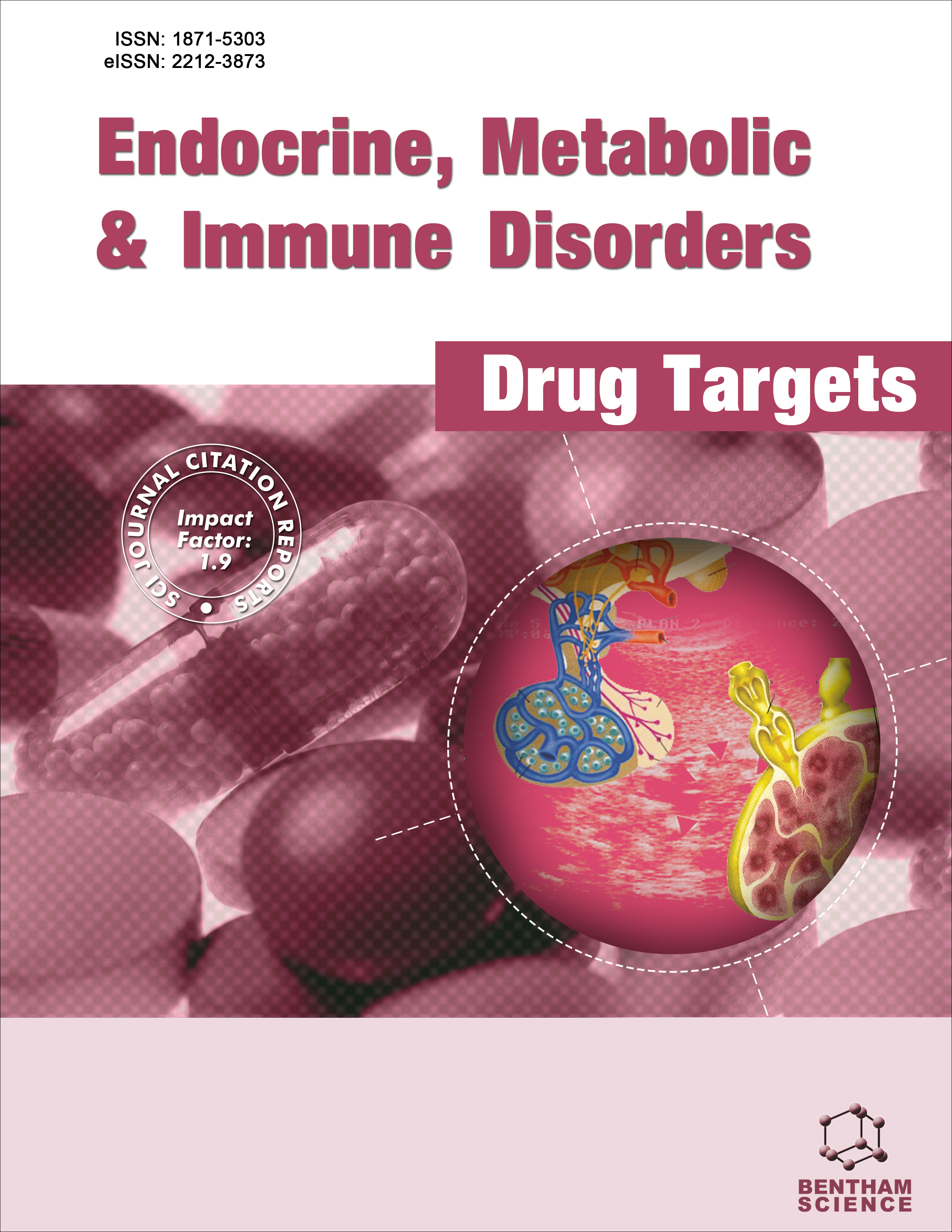-
s Predicting Factors of Worse Prognosis in COVID-19: Results from a Cross-sectional Study on 52 Inpatients Admitted to the Internal Medicine Department
- Source: Endocrine, Metabolic & Immune Disorders-Drug Targets (Formerly Current Drug Targets - Immune, Endocrine & Metabolic Disorders), Volume 24, Issue 10, Aug 2024, p. 1224 - 1236
-
- 01 Aug 2024
Abstract
Background: The initial phases of the COVID-19 pandemic posed a real need for clinicians to identify patients at risk of poor prognosis as soon as possible after hospital admission. Aims: The study aimed to assess the role of baseline anamnestic information, clinical parameters, instrumental examination, and serum biomarkers in predicting adverse outcomes of COVID-19 in a hospital setting of Internal Medicine. Methods: Fifty-two inpatients consecutively admitted to the Unit of Internal Medicine “Baccelli,” Azienda Ospedaliero – Universitaria Policlinico of Bari (February 1 - May 31, 2021) due to confirmed COVID-19 were grouped into two categories based on the specific outcome: good prognosis (n=44), patients discharged at home after the acute phase of the infection; poor prognosis, a composite outcome of deaths and intensive care requirements (n=8). Data were extracted from medical records of patients who provided written informed consent to participate. Results: The two study groups had similar demographic, anthropometric, clinical, and radiological characteristics. Higher interleukin 6 (IL-6) levels and leucocyte count, and lower free triiodothyronine (fT3) levels were found in patients with poor than those with good prognosis. Higher IL-6 levels and leucocyte count, lower fT3 concentration, and pre-existing hypercholesterolemia were independent risk factors of poor outcomes in our study population. A predicting risk score, built by assigning one point if fT3 < 2 pg/mL, IL-6 >25 pg/mL, and leucocyte count >7,000 n/mm3, revealed that patients totalizing at least 2 points by applying the predicting score had a considerably higher risk of poor prognosis than those scoring <2 points (OR 24.35 (1.32; 448), p = 0.03). The weight of pre-existing hypercholesterolemia did not change the risk estimation. Conclusion: Four specific baseline variables, one anamnestic (pre-existing hypercholesterolemia) and three laboratory parameters (leucocyte count, IL-6, and fT3), were significantly associated with poor prognosis as independent risk factors. To prevent adverse outcomes, the updated 4-point score could be useful in identifying at-risk patients, highlighting the need for specific trials to estimate the safety and efficacy of targeted treatments.


